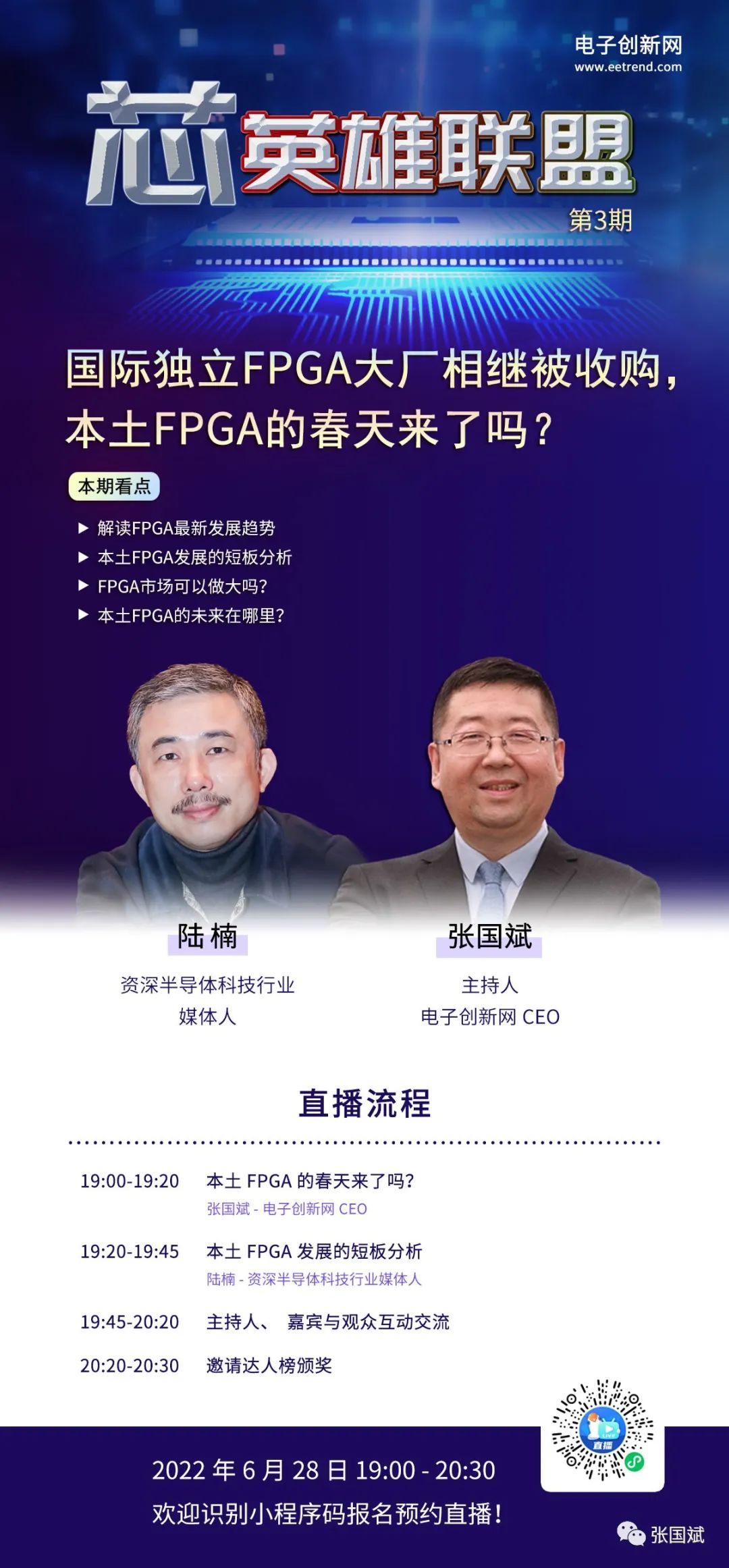When it comes to oscilloscopes, many people might picture a device with a bunch of buttons and a small display screen. However, the latest oscilloscope released by the leading company Tektronix is sure to completely overturn your perception of traditional oscilloscopes.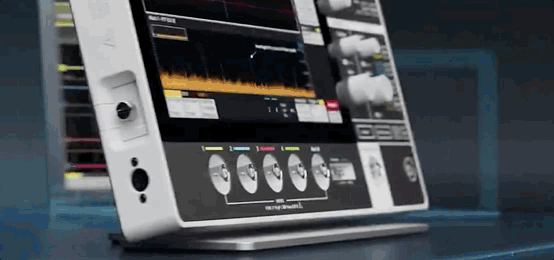 This lightweight and stylish tablet-like device is the new 2 Series MSO Mixed Signal Oscilloscope from Tektronix. It allows engineers to work freely anytime and anywhere. The new 2 Series MSO Mixed Signal Oscilloscope weighs only 1.8 kg and is just 3.8 cm thick, making it easy to fit into a small backpack. Especially in the current pandemic environment, it can be easily carried around, providing unmatched convenience.Such a fashionable and cool product comes from a company that is already 76 years old, which might leave many people puzzled. Today, I will take you on a journey to explore the secrets behind how this company has continuously led the innovation of oscilloscopes. This story begins with Apple co-founder Steve Jobs.A Piece of History
This lightweight and stylish tablet-like device is the new 2 Series MSO Mixed Signal Oscilloscope from Tektronix. It allows engineers to work freely anytime and anywhere. The new 2 Series MSO Mixed Signal Oscilloscope weighs only 1.8 kg and is just 3.8 cm thick, making it easy to fit into a small backpack. Especially in the current pandemic environment, it can be easily carried around, providing unmatched convenience.Such a fashionable and cool product comes from a company that is already 76 years old, which might leave many people puzzled. Today, I will take you on a journey to explore the secrets behind how this company has continuously led the innovation of oscilloscopes. This story begins with Apple co-founder Steve Jobs.A Piece of History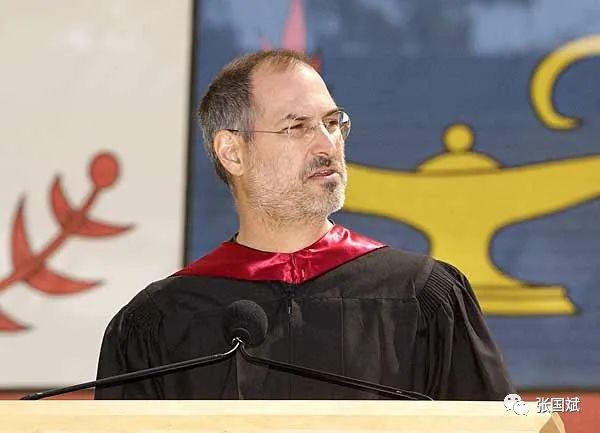 In 2005, Steve Jobs delivered a famous speech at Stanford University’s graduation ceremony titled “Stay Hungry, Stay Foolish.” In his speech, he emphasized: “…I love what I do, and that is the only reason that has kept me going all these years. You have to find what you love, whether in work or in love. Your work will fill a large part of your life, and the only way to be truly satisfied is to do what you believe is great work, and the only way to do great work is to love what you do. If you haven’t found it yet, keep looking. Don’t settle.“Some people summarize it as: Do what you love, love what you do.Another well-known quote from this speech is: Stay Hungry. Stay Foolish.You may have noticed the content above, but you might not have paid attention to what he said at the beginning about how his study of calligraphy at Reed College helped with the Macintosh fonts. This actually contains extremely important information, and our main character today is related to this.Although Reed College is not as famous as some of the well-known Ivy League universities, it ranks third in the number of PhDs produced in the United States, making it a true breeding ground for top talent. Although Jobs only stayed there for six months, it greatly helped him later, which is one example.This college also nurtured a giant in the field of semiconductor testing and measurement.
In 2005, Steve Jobs delivered a famous speech at Stanford University’s graduation ceremony titled “Stay Hungry, Stay Foolish.” In his speech, he emphasized: “…I love what I do, and that is the only reason that has kept me going all these years. You have to find what you love, whether in work or in love. Your work will fill a large part of your life, and the only way to be truly satisfied is to do what you believe is great work, and the only way to do great work is to love what you do. If you haven’t found it yet, keep looking. Don’t settle.“Some people summarize it as: Do what you love, love what you do.Another well-known quote from this speech is: Stay Hungry. Stay Foolish.You may have noticed the content above, but you might not have paid attention to what he said at the beginning about how his study of calligraphy at Reed College helped with the Macintosh fonts. This actually contains extremely important information, and our main character today is related to this.Although Reed College is not as famous as some of the well-known Ivy League universities, it ranks third in the number of PhDs produced in the United States, making it a true breeding ground for top talent. Although Jobs only stayed there for six months, it greatly helped him later, which is one example.This college also nurtured a giant in the field of semiconductor testing and measurement.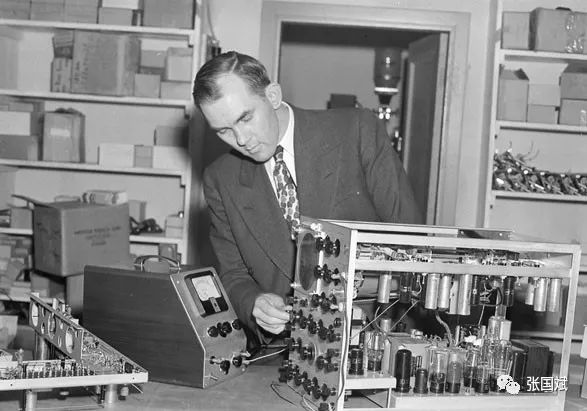 He is Charles Howard Vollum, the founder of Tektronix, a leading company in oscilloscopes.Born on May 31, 1913, in Portland, Oregon, Vollum spent his entire childhood there and received a complete education. In 1936, he obtained a PhD in Physics from Reed College, making him a senior to Jobs in terms of enrollment.Vollum had a strong interest in signal detection. He served in World War II, and in early 1941, he was assigned to the British Air Force Research and Development Agency to study precision fire control radar. At that time, they were using British oscilloscopes, and Vollum made many improvements. In 1945, in recognition of his work with the communication troops, he was awarded the Legion of Merit by the U.S. government.
He is Charles Howard Vollum, the founder of Tektronix, a leading company in oscilloscopes.Born on May 31, 1913, in Portland, Oregon, Vollum spent his entire childhood there and received a complete education. In 1936, he obtained a PhD in Physics from Reed College, making him a senior to Jobs in terms of enrollment.Vollum had a strong interest in signal detection. He served in World War II, and in early 1941, he was assigned to the British Air Force Research and Development Agency to study precision fire control radar. At that time, they were using British oscilloscopes, and Vollum made many improvements. In 1945, in recognition of his work with the communication troops, he was awarded the Legion of Merit by the U.S. government.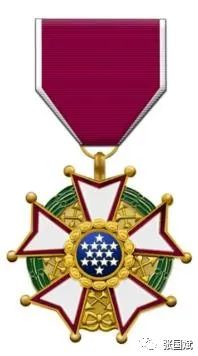 Later, due to his outstanding work on precision mortar locators while working at the Evans Signal Laboratory in Bellma, New Jersey, he was also awarded the Oak Leaf Cluster of the Legion of Merit. It is extraordinary for a captain to receive the Legion of Merit, as past recipients were mainly heads of state, generals, or colonels. The fact that Vollum, as a captain, received this medal indicates that his work was exceptional.This is a photo of him during his service and award ceremony.
Later, due to his outstanding work on precision mortar locators while working at the Evans Signal Laboratory in Bellma, New Jersey, he was also awarded the Oak Leaf Cluster of the Legion of Merit. It is extraordinary for a captain to receive the Legion of Merit, as past recipients were mainly heads of state, generals, or colonels. The fact that Vollum, as a captain, received this medal indicates that his work was exceptional.This is a photo of him during his service and award ceremony.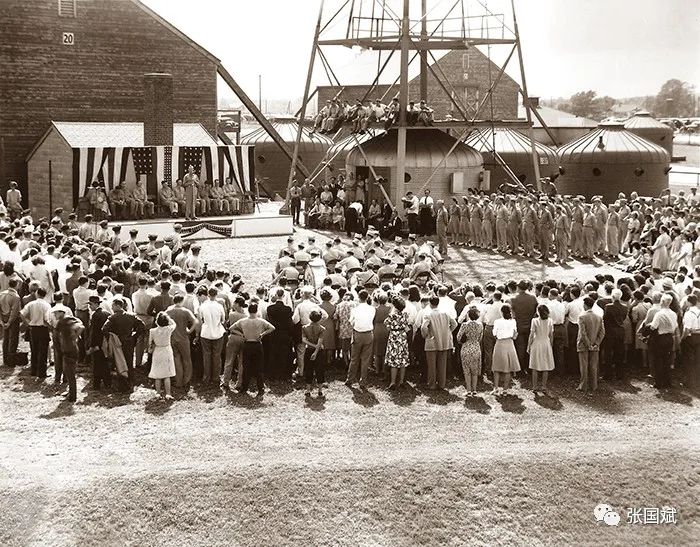
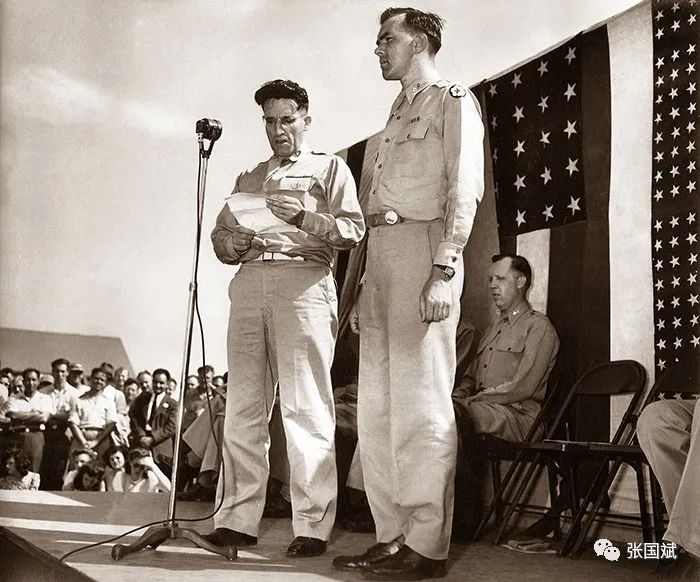 He even made headlines in the newspapers and became a celebrity.
He even made headlines in the newspapers and became a celebrity.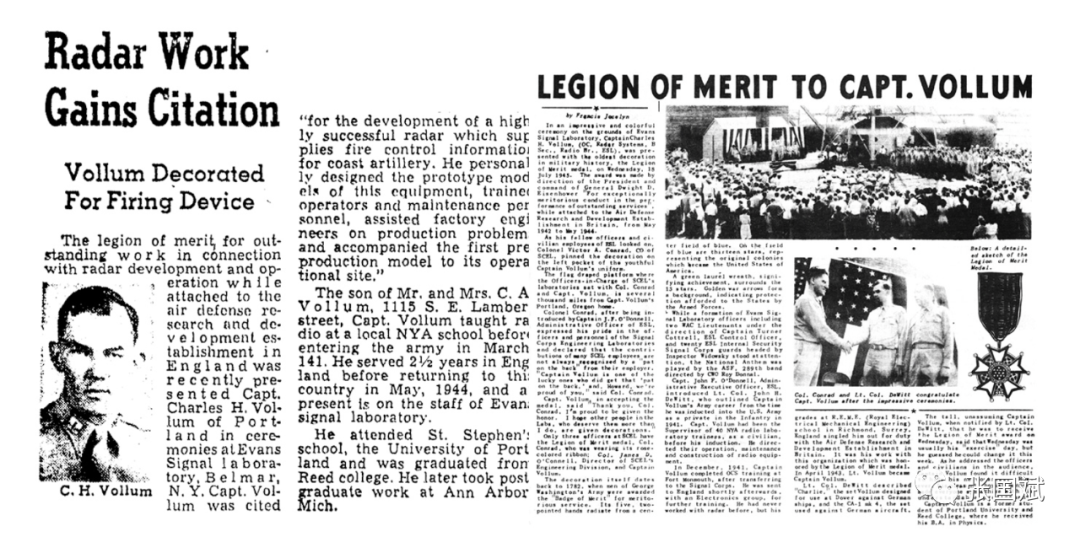 After World War II, he retired from active duty and returned to Portland. In January 1946, he and a few friends pooled $2,600 to establish Tektronix, Inc. The company’s original purpose was: “to install, maintain, service, sell, purchase, manufacture, and otherwise acquire and operate radio and other instruments.” Vollum became the first president and chief engineer of the company. Why did the company include installation and maintenance services? This is because Vollum had a passion for tinkering with radio products since childhood and even repaired electrical appliances while in college, which was his beloved old profession.Now that the company was established, what products should be developed? Of course, it would be what Vollum was interested in, which was oscilloscopes! Although oscilloscopes had been invented long ago, the first cathode ray tube (CRT) oscilloscope was developed by Jonathan Zenneck in 1899, and early CRTs were used in laboratory measurements in the 1920s, but they had issues with vacuum and cathode emitter stability, and their operation was also cumbersome.Vollum had tinkered with an oscilloscope in college, and after the establishment of Tektronix, Vollum innovated based on the pain points of oscilloscopes at that time. Soon after the company was founded, Tektronix launched the world’s first commercial oscilloscope, the Vollumscope, which was a synchronized oscilloscope with a bandwidth of 10 MHz, making it the fastest, most accurate, and most portable oscilloscope of its time. Due to the use of a large number of transistors, this “most portable” oscilloscope weighed 65 pounds, making it not exactly “portable” but rather something to be carried around.Subsequently, in 1947, the first oscilloscope with a calibrated amplifier and calibrated time base, the Tek 511, was born, marking the beginning of a new era for commercial oscilloscopes. Vollum was also involved in the design, and the 511 was claimed to be the world’s leading oscilloscope in terms of calibration.At that time, the leading oscilloscope manufacturer was DuMont Laboratories. Its head, Allen DuMont, personally tried the 511 at an electronics exhibition and was impressed by it. However, when he saw the price of $795 for the 511, he predicted that Tektronix would struggle to sell many units, only to be proven wrong by the sales figures.This is the Tek 511 oscilloscope from that time.
After World War II, he retired from active duty and returned to Portland. In January 1946, he and a few friends pooled $2,600 to establish Tektronix, Inc. The company’s original purpose was: “to install, maintain, service, sell, purchase, manufacture, and otherwise acquire and operate radio and other instruments.” Vollum became the first president and chief engineer of the company. Why did the company include installation and maintenance services? This is because Vollum had a passion for tinkering with radio products since childhood and even repaired electrical appliances while in college, which was his beloved old profession.Now that the company was established, what products should be developed? Of course, it would be what Vollum was interested in, which was oscilloscopes! Although oscilloscopes had been invented long ago, the first cathode ray tube (CRT) oscilloscope was developed by Jonathan Zenneck in 1899, and early CRTs were used in laboratory measurements in the 1920s, but they had issues with vacuum and cathode emitter stability, and their operation was also cumbersome.Vollum had tinkered with an oscilloscope in college, and after the establishment of Tektronix, Vollum innovated based on the pain points of oscilloscopes at that time. Soon after the company was founded, Tektronix launched the world’s first commercial oscilloscope, the Vollumscope, which was a synchronized oscilloscope with a bandwidth of 10 MHz, making it the fastest, most accurate, and most portable oscilloscope of its time. Due to the use of a large number of transistors, this “most portable” oscilloscope weighed 65 pounds, making it not exactly “portable” but rather something to be carried around.Subsequently, in 1947, the first oscilloscope with a calibrated amplifier and calibrated time base, the Tek 511, was born, marking the beginning of a new era for commercial oscilloscopes. Vollum was also involved in the design, and the 511 was claimed to be the world’s leading oscilloscope in terms of calibration.At that time, the leading oscilloscope manufacturer was DuMont Laboratories. Its head, Allen DuMont, personally tried the 511 at an electronics exhibition and was impressed by it. However, when he saw the price of $795 for the 511, he predicted that Tektronix would struggle to sell many units, only to be proven wrong by the sales figures.This is the Tek 511 oscilloscope from that time.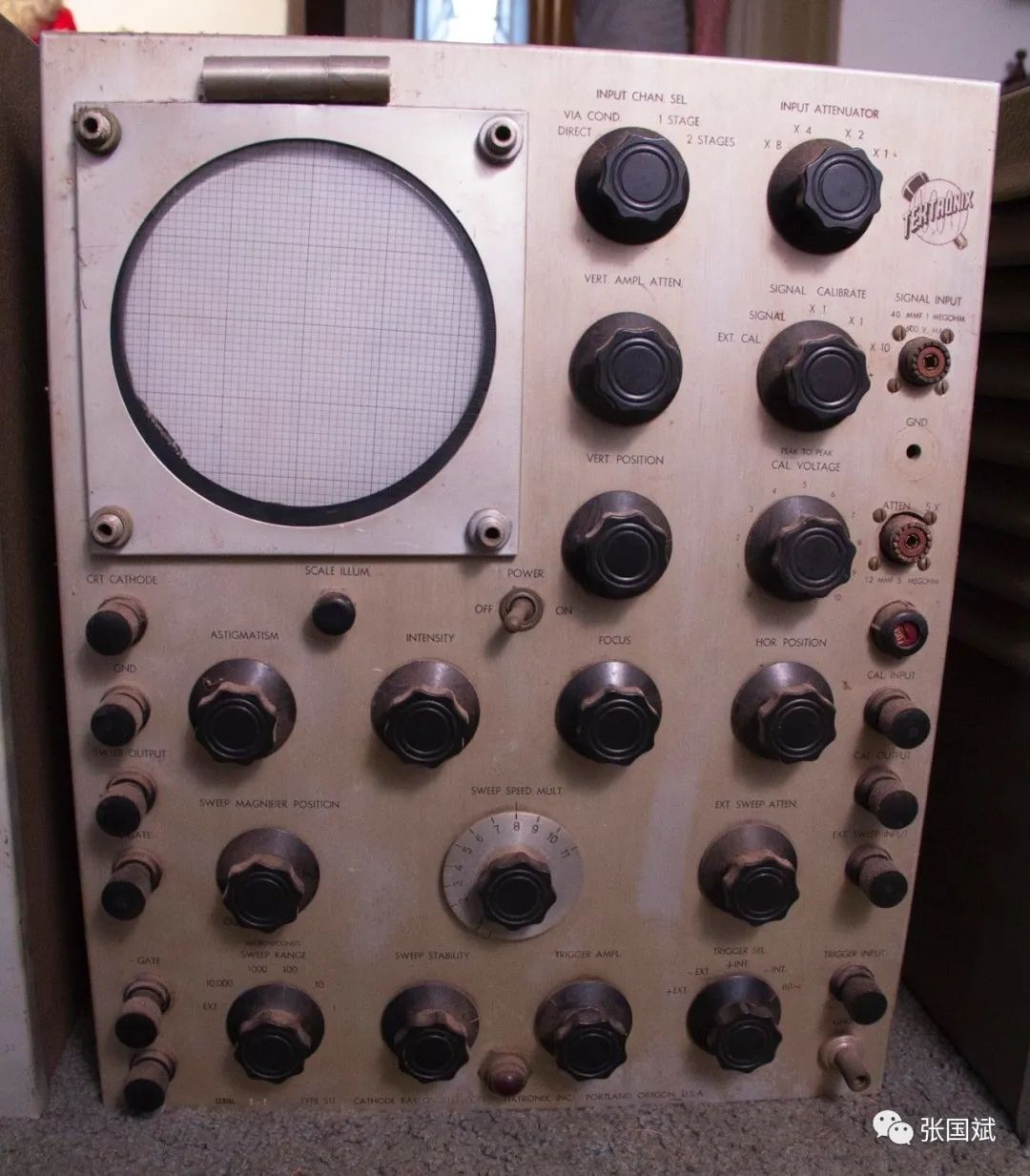
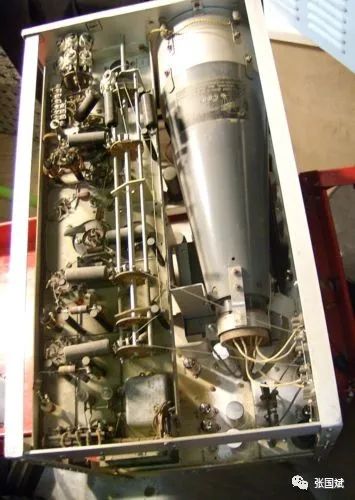 After that, Tektronix began an unprecedented innovation journey in the history of oscilloscopes:In 1959, Tektronix launched the Tek 526/585, where the 526 was the first “vector display” introduced by Tektronix, providing precise color signal analysis, while the 585 became the first oscilloscope with a bandwidth of 100 MHz.In 1960, Tektronix developed the first solid-state oscilloscope powered by batteries, the Tek 321.In 1962, Tektronix launched the first oscilloscope to provide digital readings, the Tek 567;In 1969, Tektronix introduced the Tek 7000 series modular oscilloscope, continuing to maintain its leading edge in real-time analog oscilloscopes, with a maximum bandwidth of 150 MHz and offering 20 types of plugins.In 1979, Tektronix launched the first general-purpose real-time gigahertz oscilloscope, the Tek 7104, and that same year, Tek oscilloscopes surpassed 1 million units sold. The 7104 also represented the pinnacle of analog oscilloscopes, and with the rise of digital circuits, ADCs began to appear, marking the dawn of digital oscilloscopes. It can be said that the 7104 represented the highest achievement of the analog era and heralded the beginning of its decline.In 1983, Tektronix launched the first integrated circuit-driven portable oscilloscope, the 2465.In 1996, Tektronix applied advanced digital real-time technology to low-end products, giving birth to the first TDS200 series, marking the arrival of the digital oscilloscope era and leading the transition from analog to digital.In 1998, Tektronix first introduced digital phosphor oscilloscopes (DPO) TDS500D and TDS700D, developed for cutting-edge electronic design, with seven models covering 500 MHz to 2 GHz, creating new applications for oscilloscopes in wireless communication and replacing high-priced analog oscilloscopes.In January 2006, Tektronix launched the world’s most comprehensive oscilloscope—the DPO7000 digital phosphor oscilloscope (DPO), allowing users to avoid compromising on various performance aspects, thus changing user expectations.In 2007, Tektronix introduced the first 20 GHz real-time oscilloscope, a high-performance oscilloscope capable of achieving a sampling rate of 50 GSps across four channels—the DSA70000, which adopted Tektronix’s fourth-generation DPX architecture, with each channel having 200 MB of memory.In February 2014, Tektronix launched the MDO3000 series mixed-domain oscilloscope, which serves as a six-in-one measurement instrument, including a spectrum analyzer, logic analyzer, protocol analyzer, arbitrary function generator, and digital multimeter, providing the ultimate integrated oscilloscope that can replace various expensive and dedicated devices on the design workbench, offering all the tools needed for testing and debugging almost all embedded designs.In April 2015, Tektronix launched the first 70 GHz ATI high-performance oscilloscope, the DPO70000SX, which offers the lowest noise and highest effective bits among any ultra-high bandwidth real-time oscilloscope on the market, efficiently meeting the current and future needs of engineers and scientists developing high-speed coherent optical systems or conducting cutting-edge research.In December 2015, Tektronix launched the MDO4000C series mixed-domain oscilloscope, which can be configured with up to six instruments in one device, including a fully functional spectrum analyzer.In June 2017, Tektronix once again broke through innovation barriers with the launch of the new 5 Series Mixed Signal Oscilloscope MSO, incorporating a wealth of innovative technologies and redefining the standards for mid-range oscilloscopes.
After that, Tektronix began an unprecedented innovation journey in the history of oscilloscopes:In 1959, Tektronix launched the Tek 526/585, where the 526 was the first “vector display” introduced by Tektronix, providing precise color signal analysis, while the 585 became the first oscilloscope with a bandwidth of 100 MHz.In 1960, Tektronix developed the first solid-state oscilloscope powered by batteries, the Tek 321.In 1962, Tektronix launched the first oscilloscope to provide digital readings, the Tek 567;In 1969, Tektronix introduced the Tek 7000 series modular oscilloscope, continuing to maintain its leading edge in real-time analog oscilloscopes, with a maximum bandwidth of 150 MHz and offering 20 types of plugins.In 1979, Tektronix launched the first general-purpose real-time gigahertz oscilloscope, the Tek 7104, and that same year, Tek oscilloscopes surpassed 1 million units sold. The 7104 also represented the pinnacle of analog oscilloscopes, and with the rise of digital circuits, ADCs began to appear, marking the dawn of digital oscilloscopes. It can be said that the 7104 represented the highest achievement of the analog era and heralded the beginning of its decline.In 1983, Tektronix launched the first integrated circuit-driven portable oscilloscope, the 2465.In 1996, Tektronix applied advanced digital real-time technology to low-end products, giving birth to the first TDS200 series, marking the arrival of the digital oscilloscope era and leading the transition from analog to digital.In 1998, Tektronix first introduced digital phosphor oscilloscopes (DPO) TDS500D and TDS700D, developed for cutting-edge electronic design, with seven models covering 500 MHz to 2 GHz, creating new applications for oscilloscopes in wireless communication and replacing high-priced analog oscilloscopes.In January 2006, Tektronix launched the world’s most comprehensive oscilloscope—the DPO7000 digital phosphor oscilloscope (DPO), allowing users to avoid compromising on various performance aspects, thus changing user expectations.In 2007, Tektronix introduced the first 20 GHz real-time oscilloscope, a high-performance oscilloscope capable of achieving a sampling rate of 50 GSps across four channels—the DSA70000, which adopted Tektronix’s fourth-generation DPX architecture, with each channel having 200 MB of memory.In February 2014, Tektronix launched the MDO3000 series mixed-domain oscilloscope, which serves as a six-in-one measurement instrument, including a spectrum analyzer, logic analyzer, protocol analyzer, arbitrary function generator, and digital multimeter, providing the ultimate integrated oscilloscope that can replace various expensive and dedicated devices on the design workbench, offering all the tools needed for testing and debugging almost all embedded designs.In April 2015, Tektronix launched the first 70 GHz ATI high-performance oscilloscope, the DPO70000SX, which offers the lowest noise and highest effective bits among any ultra-high bandwidth real-time oscilloscope on the market, efficiently meeting the current and future needs of engineers and scientists developing high-speed coherent optical systems or conducting cutting-edge research.In December 2015, Tektronix launched the MDO4000C series mixed-domain oscilloscope, which can be configured with up to six instruments in one device, including a fully functional spectrum analyzer.In June 2017, Tektronix once again broke through innovation barriers with the launch of the new 5 Series Mixed Signal Oscilloscope MSO, incorporating a wealth of innovative technologies and redefining the standards for mid-range oscilloscopes.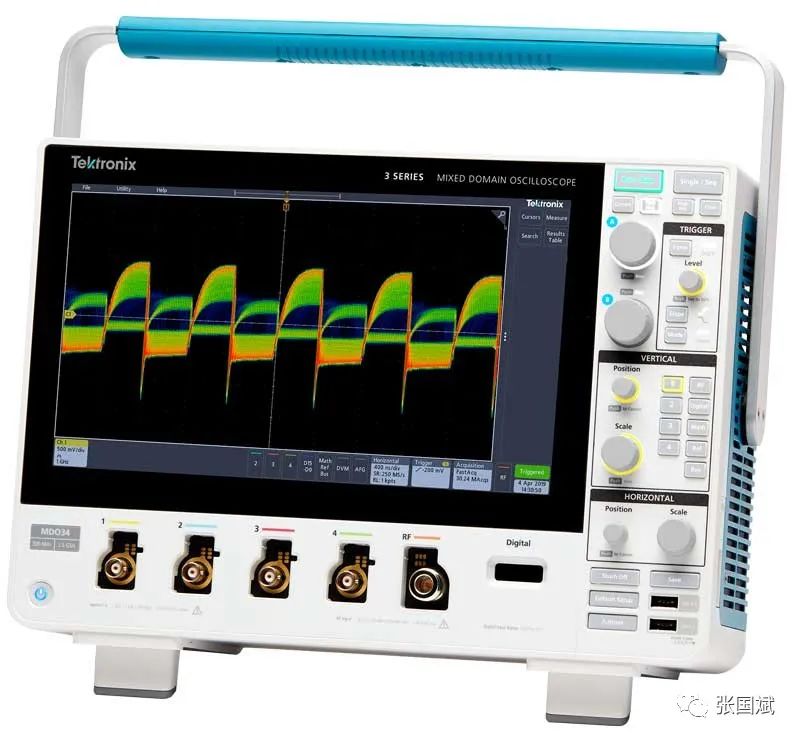 In June 2019, Tektronix, with its award-winning industrial design and the largest display in its class, created the next generation of mid-range oscilloscopes, the new 3 Series MDO and 4 Series MSO (shown above), combining the efforts of the best engineers and their love for first-class features, providing an unprecedented user experience and more choices for all engineers.Innovation Secrets of the New 2 Series
In June 2019, Tektronix, with its award-winning industrial design and the largest display in its class, created the next generation of mid-range oscilloscopes, the new 3 Series MDO and 4 Series MSO (shown above), combining the efforts of the best engineers and their love for first-class features, providing an unprecedented user experience and more choices for all engineers.Innovation Secrets of the New 2 Series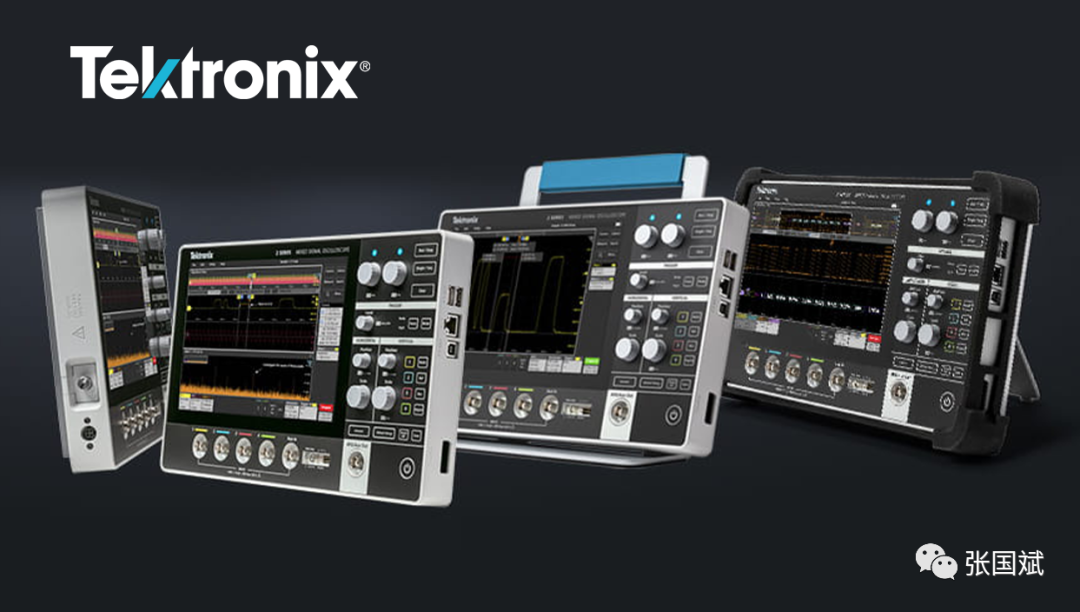 In June 2022, on the path of oscilloscope innovation, Tektronix launched the new 2 Series MSO Mixed Signal Oscilloscope (hereinafter referred to as “new 2 series”), promoting a new concept of personal testing terminals, achieving lightweight portability and more comprehensive testing and analysis functions. After more than 70 years of refinement, the oscilloscope has finally transformed into a fashionable, portable testing terminal that not only boasts powerful functions but also incorporates some stylish elements from consumer electronics, such as touch screens and large displays, making it more aesthetically pleasing and “warm”.
In June 2022, on the path of oscilloscope innovation, Tektronix launched the new 2 Series MSO Mixed Signal Oscilloscope (hereinafter referred to as “new 2 series”), promoting a new concept of personal testing terminals, achieving lightweight portability and more comprehensive testing and analysis functions. After more than 70 years of refinement, the oscilloscope has finally transformed into a fashionable, portable testing terminal that not only boasts powerful functions but also incorporates some stylish elements from consumer electronics, such as touch screens and large displays, making it more aesthetically pleasing and “warm”.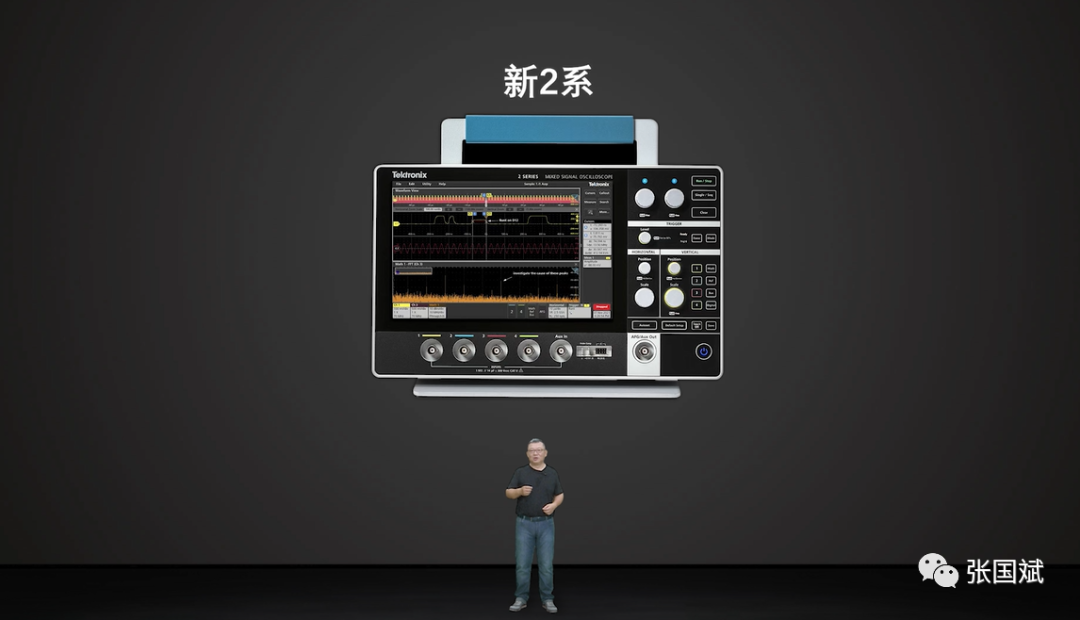 At the launch event, Song Lei, General Manager of Tektronix’s Distribution Business in China, stated that the new 2 series can seamlessly move between the workbench and the testing site, expanding new application scenarios for traditional oscilloscopes.“Tektronix has a history of 76 years. Our mission is to help engineers innovate, so we must innovate ourselves to help others innovate. Innovation has always been a long-standing culture in our company,” Song Lei pointed out. “In the development of the new 2 series, the biggest challenge we faced was not a technical challenge. The chip technology, software, and some testing functions used here already existed in the 3, 4, 5, and 6 series. The biggest challenge and innovation came from the user experience. When defining this product, we followed the customers’ ideas. We heard many users say they wanted a very thin, lightweight, and convenient device that could handle multiple scenarios. Each of these requirements alone is not a challenge, but putting them all into a tablet-like device, like an iPad, is a significant challenge for measurement instruments.”
At the launch event, Song Lei, General Manager of Tektronix’s Distribution Business in China, stated that the new 2 series can seamlessly move between the workbench and the testing site, expanding new application scenarios for traditional oscilloscopes.“Tektronix has a history of 76 years. Our mission is to help engineers innovate, so we must innovate ourselves to help others innovate. Innovation has always been a long-standing culture in our company,” Song Lei pointed out. “In the development of the new 2 series, the biggest challenge we faced was not a technical challenge. The chip technology, software, and some testing functions used here already existed in the 3, 4, 5, and 6 series. The biggest challenge and innovation came from the user experience. When defining this product, we followed the customers’ ideas. We heard many users say they wanted a very thin, lightweight, and convenient device that could handle multiple scenarios. Each of these requirements alone is not a challenge, but putting them all into a tablet-like device, like an iPad, is a significant challenge for measurement instruments.”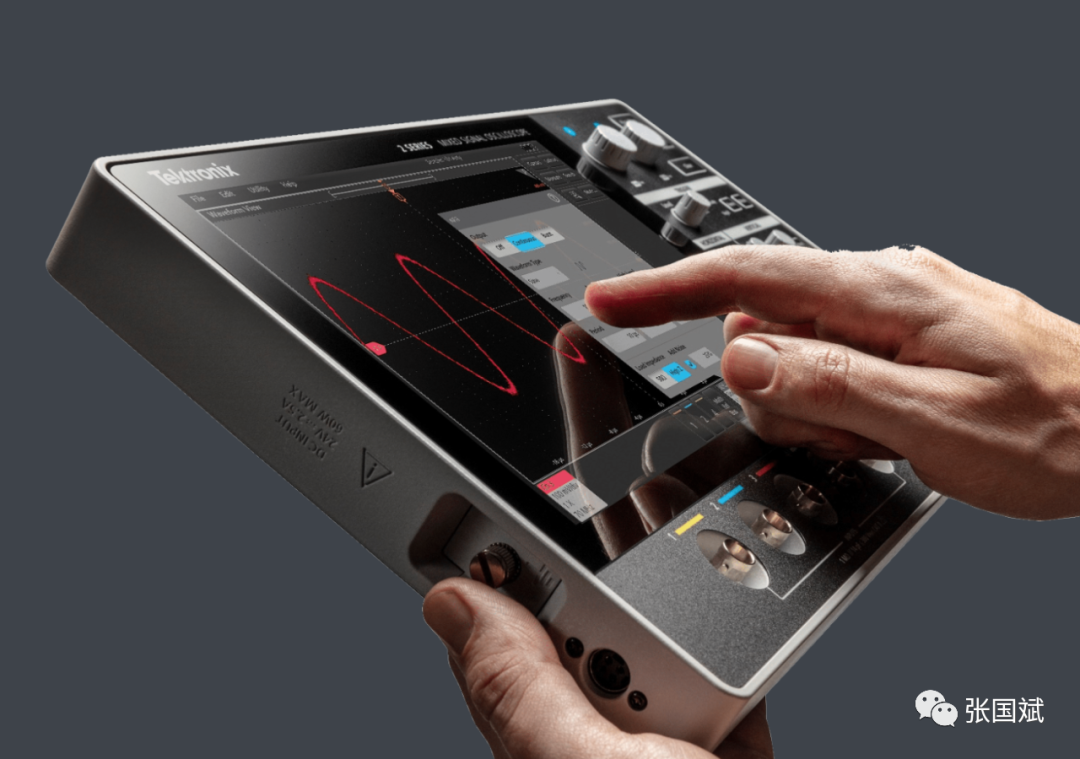 According to him, the new 2 Series MSO is equipped with powerful and comprehensive automatic measurement and analysis functions, meeting engineers’ requirements for quickly and directly obtaining measurement data. The 2 Series MSO also integrates signal generator and counter functions, allowing for the easy setup of a complete testing system platform without the need for external excitation sources, providing support for various testing environments. Its main features include:1. Bandwidth of 70 MHz-500 MHz2. 2 or 4 analog channel inputs3. 16 digital channels (to be provided in future software versions)4. 2.5 GS/s sampling rate5. Various advanced triggering and bus protocol analysis functions6. Optional 50 MHz arbitrary function generator7. Built-in pattern generator, voltmeter, and frequency counter (these functions will be launched soon)8. Optional battery with a runtime of up to 8 hoursAdditionally, through natively integrated software tools, engineers can collaborate, troubleshoot, and debug designs across time zones. The 2 Series MSO is equipped with TekDrive, a cloud-based workspace for test measurement data, allowing engineers to upload, store, organize, and share any files from connected devices. Users can also perform analysis on waveforms and save them back to the cloud, allowing colleagues to view and provide feedback directly.This feature is particularly useful, especially during the pandemic, as engineers can continue designing and testing without interruption even if they are under lockdown. Song Lei mentioned that it would have been better if this oscilloscope had been launched earlier, as it would have been more beneficial in helping with the resumption of work and production and dealing with uncertainties.“Young engineers have a higher passion for hobbies than the older generation. They also hope to have an oscilloscope that can personalize its software and accessories, which they can carry anywhere, whether at home, outdoors, or in hotels, to continue working,” he pointed out.He stated that Tektronix’s new 2 series is positioned as an entry-level all-round oscilloscope, with application scenarios including basic circuit debugging and research and development, education, and production site maintenance, making it a versatile tool. Tektronix already has MSO2/3/4/5/6 series, and the positioning of the new 2 series is that its probe interface is a universal probe interface, which means its application scenarios are not as extensive as those of the 3, 4, 5, and 6 series. This is because the probes of the 3/4/5/6 series are powered from the desktop and can connect to almost all probes in the Tektronix probe family. Therefore, the 3/4/5/6 series are more desktop-level all-rounders, while the 3 series can measure various signals such as different currents, voltages, and high voltages, while the 4/5/6 series are more focused on precision signal measurement. It is worth noting that the resolution of Tektronix’s 4/5/6 series has reached 12 bits, targeting higher-speed and more precise electronic circuit testing.
According to him, the new 2 Series MSO is equipped with powerful and comprehensive automatic measurement and analysis functions, meeting engineers’ requirements for quickly and directly obtaining measurement data. The 2 Series MSO also integrates signal generator and counter functions, allowing for the easy setup of a complete testing system platform without the need for external excitation sources, providing support for various testing environments. Its main features include:1. Bandwidth of 70 MHz-500 MHz2. 2 or 4 analog channel inputs3. 16 digital channels (to be provided in future software versions)4. 2.5 GS/s sampling rate5. Various advanced triggering and bus protocol analysis functions6. Optional 50 MHz arbitrary function generator7. Built-in pattern generator, voltmeter, and frequency counter (these functions will be launched soon)8. Optional battery with a runtime of up to 8 hoursAdditionally, through natively integrated software tools, engineers can collaborate, troubleshoot, and debug designs across time zones. The 2 Series MSO is equipped with TekDrive, a cloud-based workspace for test measurement data, allowing engineers to upload, store, organize, and share any files from connected devices. Users can also perform analysis on waveforms and save them back to the cloud, allowing colleagues to view and provide feedback directly.This feature is particularly useful, especially during the pandemic, as engineers can continue designing and testing without interruption even if they are under lockdown. Song Lei mentioned that it would have been better if this oscilloscope had been launched earlier, as it would have been more beneficial in helping with the resumption of work and production and dealing with uncertainties.“Young engineers have a higher passion for hobbies than the older generation. They also hope to have an oscilloscope that can personalize its software and accessories, which they can carry anywhere, whether at home, outdoors, or in hotels, to continue working,” he pointed out.He stated that Tektronix’s new 2 series is positioned as an entry-level all-round oscilloscope, with application scenarios including basic circuit debugging and research and development, education, and production site maintenance, making it a versatile tool. Tektronix already has MSO2/3/4/5/6 series, and the positioning of the new 2 series is that its probe interface is a universal probe interface, which means its application scenarios are not as extensive as those of the 3, 4, 5, and 6 series. This is because the probes of the 3/4/5/6 series are powered from the desktop and can connect to almost all probes in the Tektronix probe family. Therefore, the 3/4/5/6 series are more desktop-level all-rounders, while the 3 series can measure various signals such as different currents, voltages, and high voltages, while the 4/5/6 series are more focused on precision signal measurement. It is worth noting that the resolution of Tektronix’s 4/5/6 series has reached 12 bits, targeting higher-speed and more precise electronic circuit testing.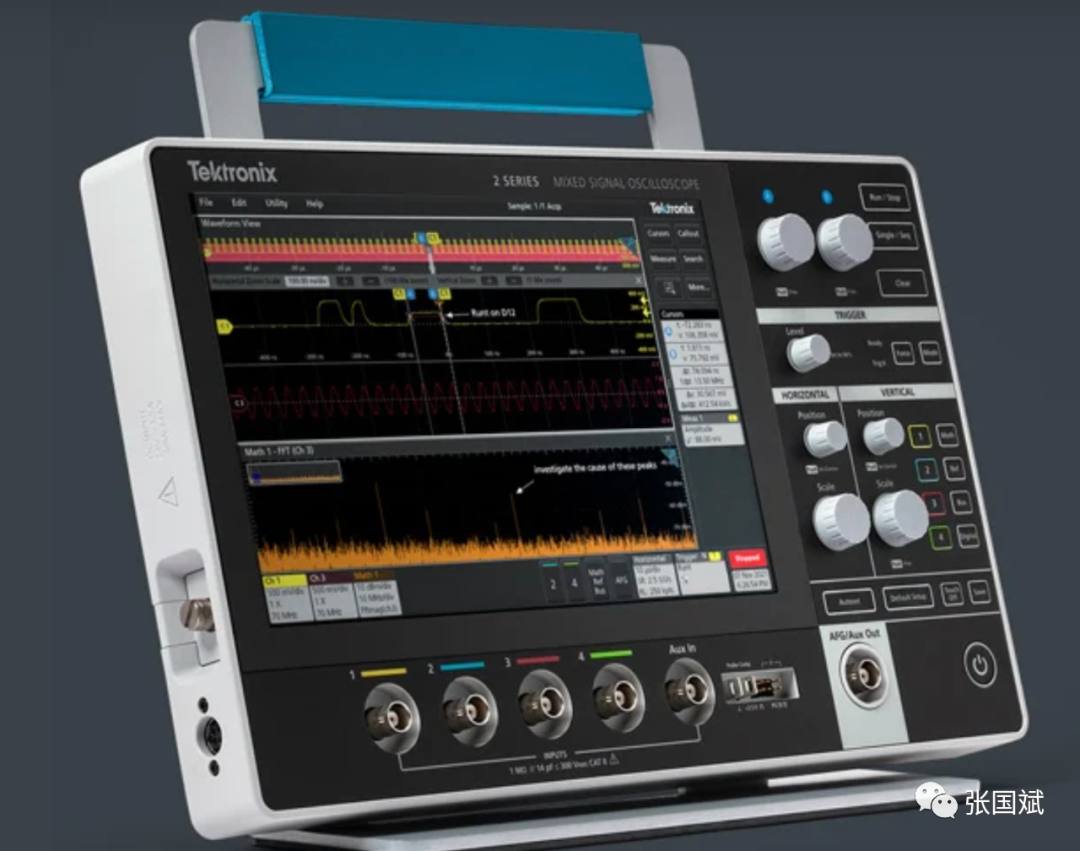 According to reports, the operation of the new 2 series is very convenient, with an interface that inherits from the 3, 4, 5, and 6 series oscilloscopes, providing engineers with a more convenient operation and a more efficient testing user experience. Additionally, the new 2 Series MSO offers a large-sized touch screen, and the simplified user interface is more user-friendly, allowing engineers to have an operating experience similar to that of a tablet or smartphone, enabling quick onboarding even for those with no prior experience. For example, dragging waveforms to adjust horizontal and vertical positions, opening and zooming to change the scale of signal detail views, and swiping in various directions to access different menus, etc.Moreover, it integrates more features, such as an optional 50 MHz AFG that allows you to generate various standard signal types; a 4-digit digital pattern generator with predefined voltage levels; a digital voltmeter and frequency counter; USB 2.0 and Ethernet ports that allow you to flexibly connect to networks, PCs, or other testing devices, etc.Song Lei stated that the new 2 series features a 10.1-inch capacitive color touch screen with a simplified user interface for quick access to any function. It has 36 automatic measurement functions, optional serial decoding, and comprehensive analysis capabilities, making it ideal for testing today’s complex embedded designs.In recent years, the oscilloscope market has also seen some fresh blood injected, but why do established companies still maintain absolute leadership? In response, Song Lei stated: “Currently, the technical threshold for oscilloscopes is not high; everyone knows the technical principles. What is the most basic in the measurement and testing instrument industry? I believe it is understanding the industry. How do you understand it? It means understanding your customers, understanding what the people who sell and make instruments do, understanding what your customers want to achieve, what their workflow is, and what challenges they face at each step of that workflow. Taking oscilloscopes as an example, when they measure this waveform, what does this shape represent? How do you interpret this waveform, and how can you help them measure accurately to bring them benefits? Measurement itself is not important; what matters is how we help our customers complete their work, get their products to market quickly, and improve their product reliability. This understanding requires a relatively long time. The accumulation of technology, concepts, and talent is the reason why the competitive landscape in the measurement instrument industry has not changed significantly among several companies.”
According to reports, the operation of the new 2 series is very convenient, with an interface that inherits from the 3, 4, 5, and 6 series oscilloscopes, providing engineers with a more convenient operation and a more efficient testing user experience. Additionally, the new 2 Series MSO offers a large-sized touch screen, and the simplified user interface is more user-friendly, allowing engineers to have an operating experience similar to that of a tablet or smartphone, enabling quick onboarding even for those with no prior experience. For example, dragging waveforms to adjust horizontal and vertical positions, opening and zooming to change the scale of signal detail views, and swiping in various directions to access different menus, etc.Moreover, it integrates more features, such as an optional 50 MHz AFG that allows you to generate various standard signal types; a 4-digit digital pattern generator with predefined voltage levels; a digital voltmeter and frequency counter; USB 2.0 and Ethernet ports that allow you to flexibly connect to networks, PCs, or other testing devices, etc.Song Lei stated that the new 2 series features a 10.1-inch capacitive color touch screen with a simplified user interface for quick access to any function. It has 36 automatic measurement functions, optional serial decoding, and comprehensive analysis capabilities, making it ideal for testing today’s complex embedded designs.In recent years, the oscilloscope market has also seen some fresh blood injected, but why do established companies still maintain absolute leadership? In response, Song Lei stated: “Currently, the technical threshold for oscilloscopes is not high; everyone knows the technical principles. What is the most basic in the measurement and testing instrument industry? I believe it is understanding the industry. How do you understand it? It means understanding your customers, understanding what the people who sell and make instruments do, understanding what your customers want to achieve, what their workflow is, and what challenges they face at each step of that workflow. Taking oscilloscopes as an example, when they measure this waveform, what does this shape represent? How do you interpret this waveform, and how can you help them measure accurately to bring them benefits? Measurement itself is not important; what matters is how we help our customers complete their work, get their products to market quickly, and improve their product reliability. This understanding requires a relatively long time. The accumulation of technology, concepts, and talent is the reason why the competitive landscape in the measurement instrument industry has not changed significantly among several companies.”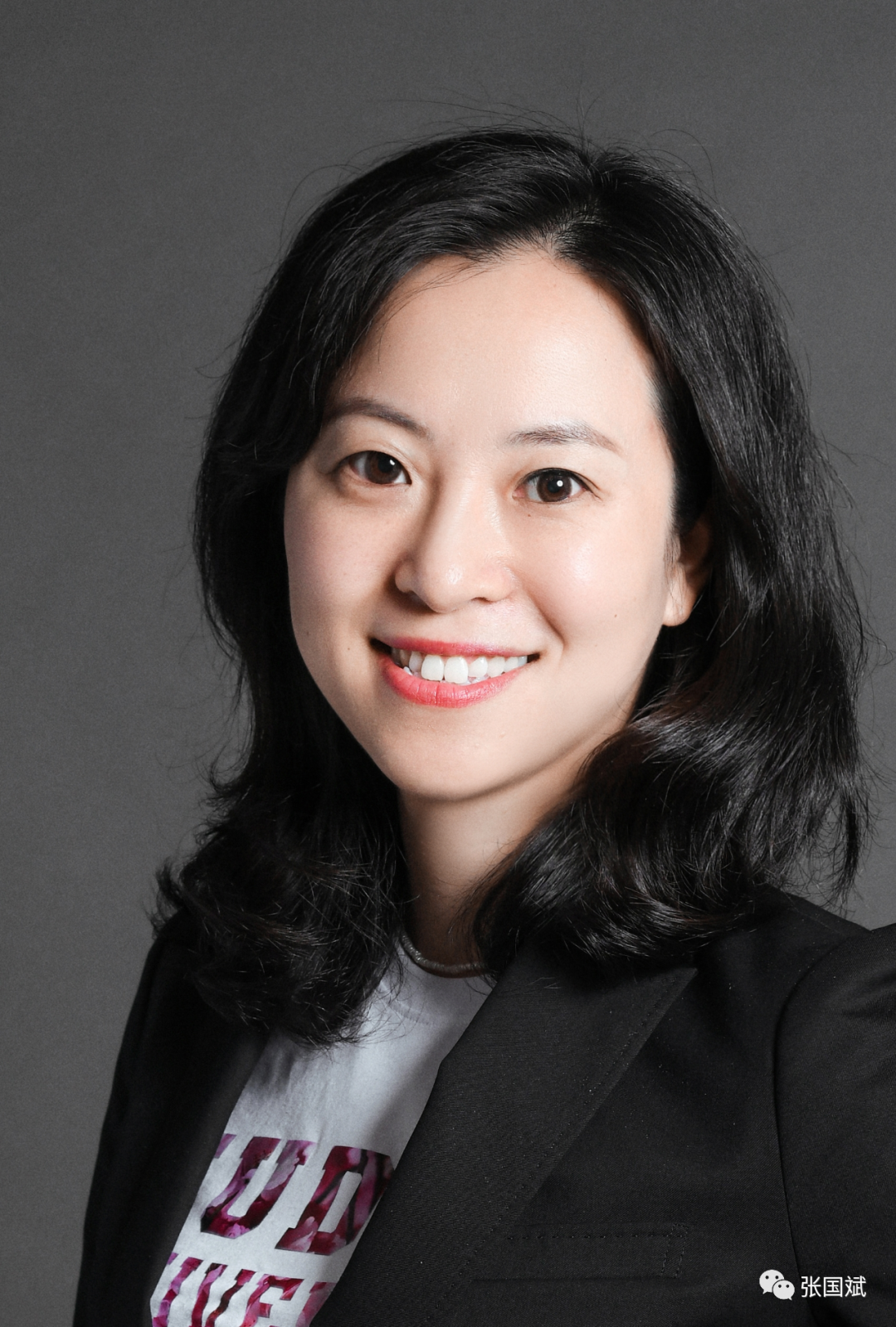 Ms. Xiang Jiaying, Marketing Director of Tektronix China, pointed out that Tektronix is a subsidiary of Fortive Group, and Fortive has a set of operational systems called the Fortive Business System, which originates from lean manufacturing. This system optimizes many processes in production to reduce waste.“At the core of this, we have a unique method and process for innovation, which is how to ensure that innovation continuously moves in the direction of the customer, iterating constantly while minimizing waste. This is the core process of Fortive. Our innovation has two major cornerstones. The first cornerstone is our understanding of customers; we need to conduct many customer visits and continuously ponder this model before arriving at such an interface and user experience. The second is how to identify customer pain points, how to create a prototype, and then continuously iterate and optimize to minimize waste in innovation, ultimately leading to the birth of such a product. Therefore, this innovation requires a strong technical foundation and cultural foundation, as well as a deep understanding of the industry to achieve such breakthrough innovations,” she added.If you look at Tektronix’s oscilloscopes and Apple’s products together, you will find that the innovation pattern is quite simple: It starts with passion, is driven by customers, is achieved through iteration, and culminates in experience. Right? (End)Come and take a look at the new 2 series oscilloscope.****************Live Broadcast Preview
Ms. Xiang Jiaying, Marketing Director of Tektronix China, pointed out that Tektronix is a subsidiary of Fortive Group, and Fortive has a set of operational systems called the Fortive Business System, which originates from lean manufacturing. This system optimizes many processes in production to reduce waste.“At the core of this, we have a unique method and process for innovation, which is how to ensure that innovation continuously moves in the direction of the customer, iterating constantly while minimizing waste. This is the core process of Fortive. Our innovation has two major cornerstones. The first cornerstone is our understanding of customers; we need to conduct many customer visits and continuously ponder this model before arriving at such an interface and user experience. The second is how to identify customer pain points, how to create a prototype, and then continuously iterate and optimize to minimize waste in innovation, ultimately leading to the birth of such a product. Therefore, this innovation requires a strong technical foundation and cultural foundation, as well as a deep understanding of the industry to achieve such breakthrough innovations,” she added.If you look at Tektronix’s oscilloscopes and Apple’s products together, you will find that the innovation pattern is quite simple: It starts with passion, is driven by customers, is achieved through iteration, and culminates in experience. Right? (End)Come and take a look at the new 2 series oscilloscope.****************Live Broadcast Preview